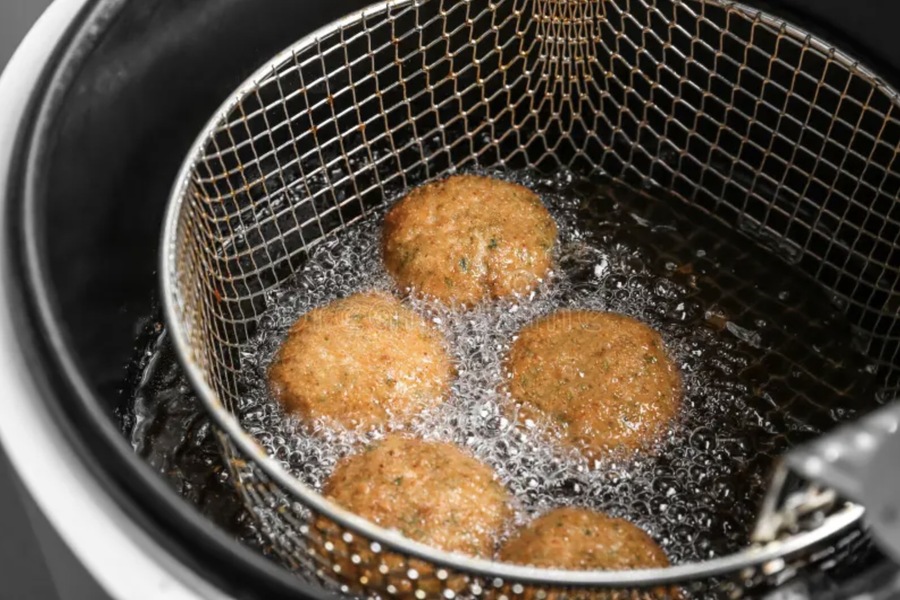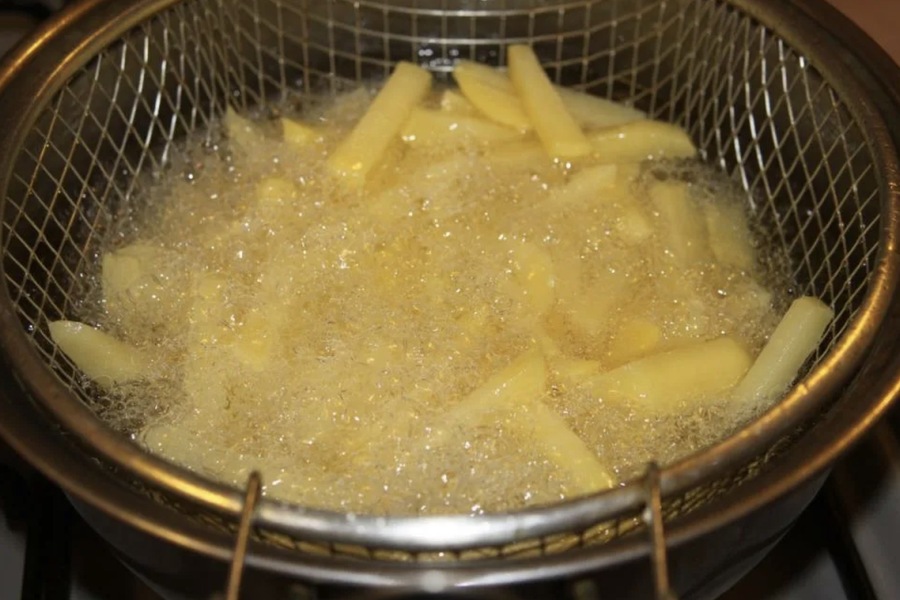Deep frying, derived from the French word friture (meaning “frying”), is a time-honored cooking method where food is submerged in hot fat or oil, allowing it to cook quickly and achieve a crispy exterior. The fat used can be of animal or vegetable origin, or sometimes a combination of both, and it’s heated to a high temperature to ensure proper cooking. This culinary technique has gained widespread popularity around the world, particularly in commercial kitchens and catering services where it is favored for its efficiency and the rich flavors it imparts to food.
Though the process of deep frying may appear simple, mastering the technique requires specific skills, attention to detail, and specialized equipment. To achieve the perfect balance between a crunchy outer layer and a tender, juicy interior, chefs often rely on professional-grade deep fryers and high-quality fats or oils sourced from trusted kitchen equipment supplies. Proper equipment not only ensures consistent results but also enhances safety and efficiency in the kitchen.
Content of Page
A Rich History of Deep Frying Across Cultures
Deep frying has ancient origins and has been practiced by civilizations across the globe for centuries. The technique of immersing food in hot oil to cook it is mentioned in various ancient texts and can be traced back to some of the earliest culinary practices.
Ancient Rome
In Roman times, various dough-based dishes were fried in oil, offering the first glimpses of what we now recognize as deep frying. These Roman fried dishes laid the foundation for modern pastry treats.
China
In China, deep frying was used for cooking both meat and vegetables, with techniques that were remarkably similar to today’s practices. The rapid cooking process allowed for the preservation of nutrients while enhancing flavors.
Japan
Japanese cuisine adapted deep frying from the Portuguese in the 16th century, who introduced the method during their trade ventures. This adoption resulted in the creation of tempura, a light and crispy style of frying that remains a hallmark of Japanese cuisine. The word “tempura” itself is derived from the Portuguese language, reflecting the influence of this cultural exchange.
Europe
In Europe, deep frying became an essential cooking method for various dishes. Fish and chips, a beloved British dish, and various fried pastries across France, Italy, and Spain demonstrate the deep-rooted tradition of frying in European kitchens.
Today, deep frying is universally practiced and has been embraced by fast food chains, high-end restaurants, and street vendors alike. From French fries and fried chicken to samosas and donuts, deep frying is central to many culinary traditions.

Types of Fats Used in Deep Frying
The success of deep frying largely depends on the type of fat or oil used. Different oils have varying smoke points (the temperature at which they begin to break down and produce smoke), making some oils more suitable for high-temperature cooking than others. The choice of oil also influences the flavor and texture of the final product.
1. Vegetable Oils
Vegetable oils are the most commonly used fats in deep frying due to their high smoke points and neutral flavor. Refined vegetable oils are preferred, as they are free of impurities that can oxidize at high temperatures and affect the taste and safety of the food. Popular choices include:
Olive oil (refined): Although extra-virgin olive oil is unsuitable for deep frying due to its low smoke point, refined olive oil is used for lighter dishes.
Peanut oil: Known for its high smoke point and mild flavor, peanut oil is ideal for deep frying.
Corn oil, sunflower oil, and soybean oil: These are affordable and commonly used oils, especially in commercial kitchens.
Palm oil: Often used in industrial frying, palm oil is favored for its stability and ability to withstand multiple frying cycles.
2. Animal Fats
Traditional frying methods often used animal fats like lard (pork fat), beef tallow, or lamb fat. These fats impart a rich flavor to the fried foods and were particularly popular in regions where these fats were readily available. Many chefs today still prefer using lard for certain fried dishes due to the unique taste it imparts.
3. Poultry Fat
Less commonly used but still significant in specific cuisines, poultry fat, such as duck fat, can lend an extra depth of flavor to dishes like fried potatoes or confit.
Equipment for Deep Frying: Traditional and Modern
Achieving perfect deep frying results requires not just the right fat, but also the right equipment. Traditional kitchens relied on simple tools like cauldrons, cast-iron pans, or heavy-bottomed sauté pans to fry food. These vessels needed to be deep enough to completely submerge the food in oil to ensure even cooking.
However, modern kitchens—particularly in commercial settings—employ advanced deep fryers and other specialized equipment to streamline the process and improve consistency.
Deep Fryers
Today, professional deep fryers are essential for maintaining consistent temperatures, which is critical to prevent food from absorbing too much oil. Deep fryers are equipped with temperature controls, making it easy to fry food precisely without overcooking or burning the oil.
For home cooks, countertop deep fryers are available, offering similar benefits on a smaller scale.
Industrial Frying Units
In large-scale production or fast-food restaurants, specialized units such as donut fryers or frying units for chicken and fish are used. These units are designed to handle high volumes of food while maintaining the quality of the oil through filtration systems that remove impurities between batches.
The use of equipment from trusted kitchen equipment suppliers ensures the durability, safety, and efficiency of these deep fryers, allowing chefs to focus on the quality of their food.
The Process of Deep Frying: Achieving Perfect Results
Deep frying may appear simple, but the process requires careful attention to detail for the best results.
1. Quantity of Oil
It is recommended to use at least four times the weight of the food in oil. This allows the oil to maintain a stable temperature even as the cold food is added, preventing drastic drops that could lead to undercooking or excess oil absorption.
2. Preheating
Before frying, the oil should be heated to the appropriate temperature, which typically ranges from 130°C to 190°C (266°F to 374°F), depending on the food being cooked. For vegetables, a lower temperature around 140°C (284°F) is ideal, while for dough products or meats, higher temperatures are necessary.
3. Calcination of Animal Fat
When using animal fat, it should be calcined, or heated to a high temperature, to remove any residual proteins or impurities. This step ensures the fat is clean and will produce crispy, evenly fried foods.
4. Frying Technique
The food must be completely submerged in oil for even cooking. Frying with insufficient oil will require turning the food, which can result in uneven cooking or absorption of excess oil on the exposed sides.

Health Considerations of Deep Frying
While deep-fried foods are undeniably delicious, they are also known for being high in fat and calories. As a result, modern health experts advise moderation in the consumption of deep-fried foods.
One of the main health concerns with deep frying is the potential for foods to absorb excessive amounts of fat, especially when cooking at lower temperatures. When the oil is not hot enough, it seeps into the food, leading to greasy and unhealthy dishes.
Using professional deep fryers, which maintain precise temperatures, can minimize these risks. Additionally, industrial deep fryers are designed with filtration systems that clean the oil after each use, removing particles that can degrade the oil’s quality. Properly filtered and maintained oil can be reused multiple times, reducing waste and preserving the quality of the fried food.
Oil Replacement Guidelines
To ensure the safety and taste of deep-fried foods, manufacturers recommend specific guidelines for replacing the oil in deep fryers. Following these recommendations helps avoid the consumption of oxidized oils, which are not only unpleasant in taste but can also pose health risks.
Conclusion
Deep frying is a time-honored cooking technique that adds flavor, texture, and appeal to a variety of dishes. While it requires specialized equipment and a certain level of skill, the results are well worth the effort. By sourcing equipment from trusted kitchen equipment suppliers and following proper frying techniques, chefs and home cooks alike can enjoy perfectly fried foods that are crispy on the outside and tender on the inside.
With careful attention to the type of fat, the frying temperature, and equipment maintenance, deep frying can be enjoyed as part of a balanced culinary experience. Whether you’re preparing crispy tempura, golden French fries, or indulgent donuts, deep frying remains a beloved technique with roots in ancient traditions and a firm place in modern kitchens.

